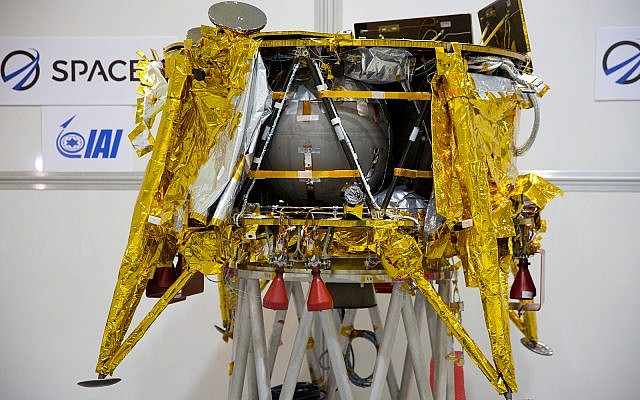Engineers on Friday released preliminary data about what they believe went wrong in the last moments of Beresheet’s flight, a day after the Israeli spacecraft crash-landed on the moon.
Engineers believe a technical glitch — likely in the component that measures the spacecraft’s altitude in relation to the surface — triggered a chain reaction of events that caused the main engine of the spacecraft to stop.
Without the main engine running as a braking mechanism, it was impossible to slow Beresheet’s speed from 1,700 kilometers per hour (1,000 mph) to 0 just above the moon’s surface. Engineers were able to restart the engine, but by this time the spacecraft was too close to the surface to slow down sufficiently.
Engineers believe the first problems started at about 14 kilometers (8.5 miles) above the lunar surface. At 150 meters (500 feet) above the moon’s surface, communication was lost completely. At this point, the spacecraft was moving at 500 kph (310 mph) making a collision with the lunar surface “inevitable,” according to a spokeswoman for the Beresheet team.
Comprehensive tests will be held next week to gain better understanding of the events.
“As far as we can see, we were very close to the moon,” operation control director Alex Friedman said to engineers in the SpaceIL control room in Yehud, east of Tel Aviv, after communication with the spacecraft went down late Thursday. “We are on the moon, but not in the way that we wanted to.”

Beresheet on display before its launch, December 17, 2018. (Ariel Schalit/AP)
Former astronaut and second man on the moon Buzz Aldrin on Thursday tweeted his condolences to the team behind the Beresheet spacecraft, saying the project was “inspiring.”
“Condolences to the Beresheet lander @TeamSpaceIL for what almost was! Communications were lost with the spacecraft just 150 meters (!!!) above the surface, and it couldn’t quite stick the landing. Never lose hope – your hard work, team work, and innovation is inspiring to all!” tweeted Aldrin, who was a member of the US Apollo 11 mission to the moon in 1969.
The spacecraft was budgeted at $100 million (NIS 370 million), a fraction of the cost of vehicles launched to the moon by major powers US, Russia and China in the past. It was a joint venture between private companies SpaceIL and Israel Aerospace Industries, funded almost entirely by private donations from well-known Jewish philanthropists.
https://www.timesofisrael.com/engineers-detail-glitches-that-caused-beresheet-to-slam-into-moon/
2019-04-12 15:01:33Z
52780265936972
Tidak ada komentar:
Posting Komentar